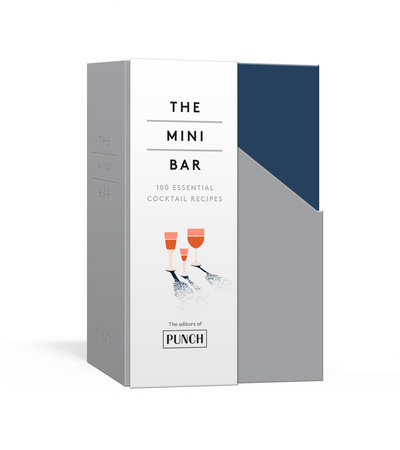Excerpt
The Mini Bar
AMARO
The Italian word for bitter, amaro (plural: amari) represents the distinctive category of aromatic, bittersweet herbal liqueurs traditionally sipped as a digestif at the end of a meal. Medieval friars and monks used their study of botany to transform herbs and botanicals into restorative tonics and elixirs that people consumed for medicinal purposes. These tonics eventually graduated from medicinal to recreational and spread throughout Europe—hence why the practice of taking an herbal or bittersweet digestif after a meal extends far beyond the Italian border, into countries like Germany, France, Denmark, Hungary, and the Czech Republic.
Italian amaro is known for its regionally inspired, proprietary recipes passed down through generations; in fact, many renowned brands are still family affairs, like Nonino, Varnelli, Fernet-Branca, Meletti, Luxardo, Lucano, Cappelletti, and Nardini. Amaro is traditionally made by macerating or infusing bittering agents like cinchona bark or gentian root with a blend of herbs, flowers, fruit peels, barks, and spices in a neutral spirit or grape distillate that is then filtered and sweetened with sugar. Many are barrel-aged for continued maturation and bottled at 16% to 40% alcohol by volume. The range of flavors of amaro varies from bright citrus to floral to vegetal to woodsy to bracingly medicinal—much of it owing to regional traditions and local flora.
Although there are only a few classic drinks that call on amaro, it has soared in popularity over the last half-decade, becoming an essential part of the bartender’s tool kit. In addition to amari, we’ve also included Italian red aperitivo (consumed pre-dinner) bitters, like Campari and Aperol, in this collection. While aperitivo bitters are not technically part of the amaro category, bartenders often employ them in drinks in similar ways.
Americano Don’t let the name fool you: the Americano’s heritage is distinctly Italian. Born from the Milano-Torino cocktail (equal parts Campari from Milan and red vermouth from Turin over ice), the Americano is believed by some to have been the favored beverage for American tourists seeking la dolce vita in Italy during Prohibition. Though its heavyweight cousin the negroni may have more currency in today’s cocktail world, the easy-drinking Americano isn’t far behind.
1 1/2 ounces Campari
1 1/2 ounces sweet vermouth
Soda water
Orange slice or orange peel, for garnish
1. Add Campari and sweet vermouth to an ice-filled Collins or rocks glass.
2. Top with soda water.
3. Garnish with an orange slice or peel.
NegroniLike all good stories, the one about the negroni’s origin involves rakish Italian nobility. Most accounts credit the recipe to one Count negroni, a swashbuckling proto-boho who reportedly spent time as a rodeo cowboy in the United States. Legend has it that back at a bar in Italy in 1919 he asked for something like an Americano, but boozier. Swap gin for soda water and, presto, the negroni.
Navigating a through line between bitter and sweet, this powerful drink—a study in balance—has evolved into one of the cornerstones of the classic cocktail revival.
1 ounce gin
1 ounce Campari
1 ounce sweet vermouth
Orange peel or half-wheel, for garnish
1. Add all of the ingredients except for the orange peel or half-wheel to a mixing glass.
2. Add ice and stir until chilled.
3. If serving on the rocks, strain over ice into a rocks glass. If serving straight up, strain into a chilled coupe or cocktail glass.
4. Garnish with an orange peel or half-wheel.
BoulevardierErskine Gwynne was an individual of epic reputation across Paris in the 1920s. A true man-about-town and boulevardier in the literal sense of the word, Gwynne ran a magazine of the same name for American expats living in Paris. Mention of this literary-influenced cocktail appears in the 1927 book Barflies and Cocktails by Harry MacElhone, who was owner of Harry’s New York Bar in Paris. Barflies and Cocktails credits Gwynne as the drink’s creator. Depending on its permutation, the boulevardier can be seen as a bittersweet variation of the Manhattan or a whiskey negroni. The true beauty of the boulevardier is its adaptability to bitter and sweet, so depending on the base spirit, you can use an array of amari and vermouth to play to the chosen whiskey’s strengths.
1 1/2 ounces bourbon or rye
1 ounce Campari
1 ounce sweet vermouth
Orange peel, for garnish
1. Add all of the ingredients except for the orange peel to a mixing glass.
2. Add ice and stir until chilled.
3. If serving on the rocks, strain over ice into a rocks glass. If serving straight up, strain into a chilled coupe or cocktail glass.
4. Garnish with an orange peel.




